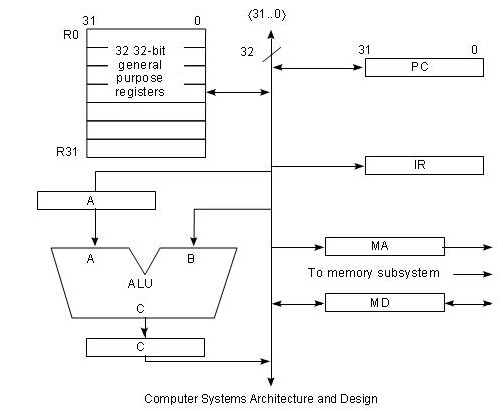Theoretical Paper
- Computer Organization
- Data Structure
- Digital Electronics
- Object Oriented Programming
- Discrete Mathematics
- Graph Theory
- Operating Systems
- Software Engineering
- Computer Graphics
- Database Management System
- Operation Research
- Computer Networking
- Image Processing
- Internet Technologies
- Micro Processor
- E-Commerce & ERP
Practical Paper
Industrial Training
Arithmatic and logic unit
Introduction
An arithmetic logic unit (ALU) is a digital circuit used to perform arithmetic and logic operations. It represents the fundamental building block of the central processing unit (CPU) of a computer. Modern CPUs contain very powerful and complex ALUs. In addition to ALUs, modern CPUs contain a control unit (CU). Most of the operations of a CPU are performed by one or more ALUs, which load data from input registers. A register is a small amount of storage available as part of a CPU. The control unit tells the ALU what operation to perform on that data and the ALU stores the result in an output register. The control unit moves the data between these registers, the ALU and memory.
How an ALU works
An ALU performs basic arithmetic and logic operations. Examples of arithmetic operations are addition, subtraction, multiplication, and division. Examples of logic operations are comparisons of values such as NOT, AND, and OR.
All information in a computer is stored and manipulated in the form of binary numbers, i.e. 0 and 1. Transistorswitches are used to manipulate binary numbers, since there are only two possible states of a switch: open or closed. An open transistor, through which there is no current, represents a 0. A closed transistor, through which there is a current, represents a 1. Operations can be accomplished by connecting multiple transistors. One transistor can be used to control a second one, in effect turning the transistor switch on or off depending on the state of the second transistor. This is referred to as a gate, because the arrangement can be used to allow or stop a current.


